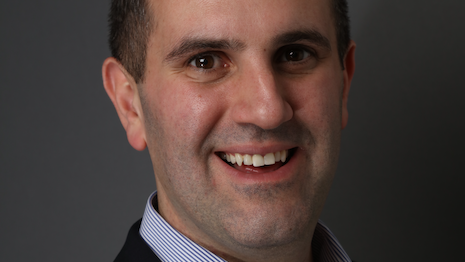- About
- Subscribe Now
- New York,
May 26, 2023

 Matthew Merrilees
Matthew Merrilees
The economic volatility has impacted shopping habits, with consumers in many regions around the world, including in the United States and the United Kingdom, reportedly reducing their non-essential spending so far in 2023.
However, despite the economic headwinds, spending on luxury has shown surprising staying power.
Bain & Company projects that the luxury goods market will continue to experience positive growth, rising by 60 percent in value by the end of the decade.
So, why and how are luxury goods able to buck the frugal trend?
Luxury is everywhere
Despite recent signs of a possible easing, inflation continues to impact consumers across the globe, disproportionately affecting the middle class.
Yet, the resilient global luxury consumer base, often less impacted by economic conditions like inflation, has been able to maintain normal spending levels.
In fact, a recent survey suggests that 70 percent of higher-income millennials are intending to splurge on spending in 2023.
However, enthusiasm for luxury goods is not only relegated to the upper class.
Consumers around the world and of varying ages – particularly those labeled as Gen Z and millennial – have shown an affinity for luxury purchases.
While millennials and Gen Z accounted for the entire growth of the luxury market just last year, Gen Z and Gen Alpha, the cohort succeeding Gen Z, are set to grow three times faster than other generations and make up one third of the luxury market by 2030.
The same research also highlights how Gen Z consumers, often driven by a more precocious attitude towards luxury, start to buy luxury items three to five years earlier than millennials, and Gen Alpha are expected to behave in a similar way.
Comparable trends are taking place across the globe.
For luxury brands everywhere, it remains clear that the United States will continue to serve as a core market.
However, other markets – including the Middle East and South Korea – are presenting highly lucrative growth opportunities.
According to Global-e’s own data, which reflects cross-border ecommerce transactions of thousands of retailers and brands, cross-border ecommerce sales for U.S. luxury merchants grew in 2022 compared to the previous year.
What is more is that this growth occurred not just in key established markets such as the U.K., Australia, Canada and Germany, but also in other international markets, including Switzerland, Japan, Singapore, Hong Kong and South Korea.
This highlights another critical opportunity for cross-border retailers: the combination of secondary markets equates to the fourth largest market fto whom U.S. luxury ecommerce brands can sell. The result is that a small percentage of sales across multiple regions can yield a huge global opportunity – that is if retailers are able to seamlessly sell across a myriad of cultural and regulatory landscapes.
Why luxury?
What is it about luxury retail that attracts people across age groups, socio-economic status and geographies?
People often retain a desire to “treat themselves”, even – or perhaps especially – during moments of emotional turmoil, such as economic hardships or, recently, the pandemic.
Indeed, during COVID-19, non-discretionary spending jumped significantly in the first few weeks of lockdown. This could mean, for instance, shelling out for a designer handbag purchased directly from the brand, rather than opting for a knockoff.
Younger consumers in particular want what is cool, modern and in style, even if it means making luxury purchases. They are drawn to the appeal of sporting and recreational brands such as Adidas and luxury brands including Gucci and Louis Vuitton.
Celebrity or influencer-led brands – i.e., Kylie cosmetics or Rihanna’s Fenty Beauty – including, but not exclusively, luxury ones, are also reeling in this demographic since younger consumers often identify with or look up to celebrities’ image or values.
And how are these younger consumers discovering such brands in the first place?
Global-e’s recent global consumer survey highlights that social media is the main channel for young consumers to discover brands outside their own market, with 50 percent of consumers aged 16-34 making a purchase from an international retailer after discovering it on a social media network.
While social media can help brands generate global traffic, the main challenge is to leverage social media presence and use it to drive direct-to-consumer sales.
It is not enough for brands to only have a presence on social media. If they really want to benefit from what these platforms offer, and convert their global follower base into buying customers, brands need to cater to their audience’s local buying preferences and provide them with a seamless and localized shopping experience on their ecommerce site.
Growth is a luxury, not a given
The slew of broader trends, consumer engagement habits and global developments have combined to help buttress luxury retail’s staying power. These include the continued buying power of consumers attracted to luxury goods, and the global appeal of luxury retail.
However, despite the industry’s against-the-grain gains, retailers of all types need to remain alert – luxury retailers are no exception.
The economic challenges, inflation pains and fears of recession are real, and they are not going away any time soon.
EXPANDING ONLINE into global markets can help U.S. luxury brands generate new revenue streams and offset any future slowdown in the domestic market.
By targeting global consumer bases and tailoring offerings to international online audiences, merchants can expand their consumer base across age brackets and geographies, providing an opportunity for luxury retailers that will benefit them amid the constant changing market dynamics.
Matthew Merrilees is CEO for North America of Global-e.
Share your thoughts. Click here